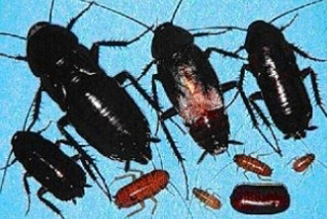

2015-02-01 Dott.sa Carla Petta posted:
Cockroaches, (order Blattodea) are also commonly known as roaches. They have a very flattened body with a small head, with a large, shield-like prothorax. Dimensions vary, with the species present in Italy ranging from a few mm to over 50 mm. The colour is usually uniform, varying from ochre to brown and black. Generally they have two pairs of wings. The front pair, which is slightly leathery, is held flat on the back; however, they rarely fly and some species, such as Blatta orientalis, have females with reduced wings. Though primarily nocturnal, in some cases they may leave their shelters during the day and in the presence of humans: this is a sign of a major infestation. There is no environment in which these insects are unable to settle, creating hygiene and sanitation difficulties, as well as cultural and economic. Sometimes, in major infestations, food is rendered unusable because it has become impregnated with unpleasant odors produced by glandular secretions. They belong to the order Blattodea, and the Blattidae, Polyphagidae, and Blattellidae families.
To understand why these insects are so present in our environment, and to prepare an effective control plan, it is important to know how to identify the various species and understand their lifecycles.
LIFECYCLE: Although the life cycle varies from species to species, cockroaches as a whole develop through gradual metamorphosis, going through four stages: egg, young, nymph, and adult. The eggs are laid in egg sacs from which the larvae hatch and emerge, resembling a miniature cockroach without wings. During successive moults the young gradually gain wings, entering the nymph stage. The final moult makes them adults, able to reproduce.
The three infesting species that create serious sanitation and hygiene problems are: BLATTELLA GERMANICA, BLATTA ORIENTALIS and PERIPLANETA AMERICANA. Other species present in Italy are: Supella longipalpa and Polyphaga aegyptiaca.
How much it cost?